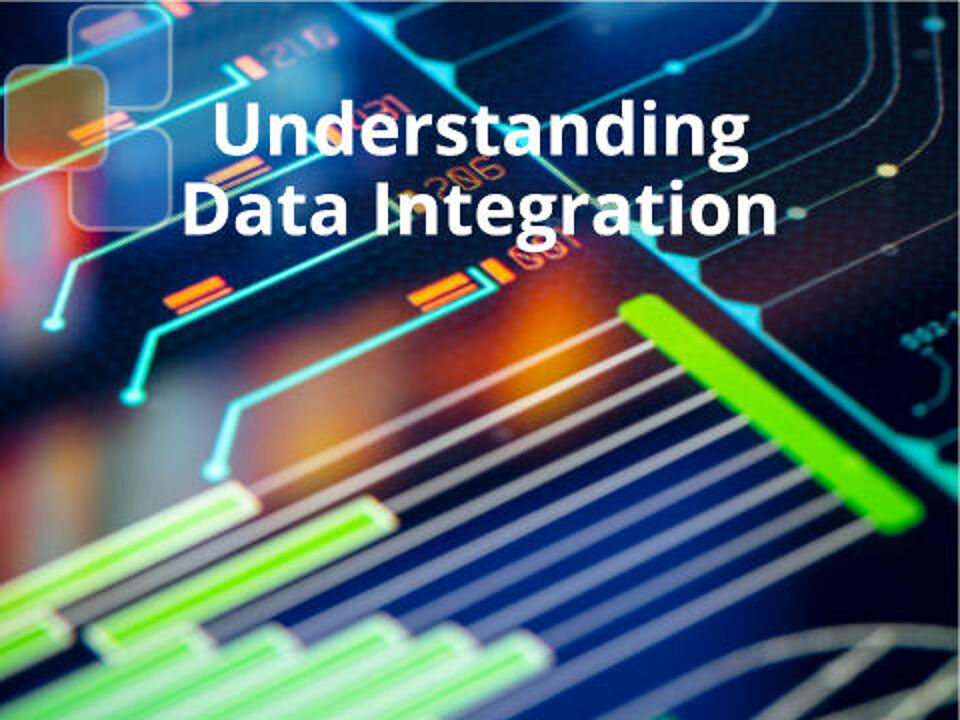
Data integration - a comprehensive understanding
One of the most important factors in a company is data and information. These are called up, analyzed and processed again and again by employees in many different work steps. Problematic is that this data is usually stored in different systems, which is why accessing it takes a lot of time. Here data integration can help. Its aim is to integrate data from different systems into one tool so that employees can access all information from one data source. In this article you can read how this works and what benefits it brings for companies.
Data integration is a key concept in the world of computing and plays a central role in the effective use of information. The concept refers to the process of bringing together data from different sources to unify it and make it accessible in a single location. Data integration is a complex process that requires specialised tools and techniques to overcome the challenges associated with different data structures and formats.
Definition: what is data integration?
Companies use many different systems and tools at their respective locations to manage their areas of responsibility. Customer relationship management in customer service, a campaign overview tool in marketing, customer applications, sales systems, etc. - they all have in common that they contain a lot of important data. This information is in good hands in the applications, but what if, for example, an employee in sales needs all the information available about a customer? Including the promotional emails received, the previous calls, the content of the conversation and the last purchases made? To do this, the sales employee has to log into many different systems, which leads to increased workload due to which it is often not feasible.
Here data integration comes in. It provides all data and information from the various sources in a single view. A process is carried out that includes the recording, cleaning, assignment and transformation of the data to match the target system.
The advantages of data integration are diverse:
- The collaboration and standardization of different systems is improved
- The company's employees save a lot of time through the uniform presentation of the data.
- The susceptibility of the data records to errors is minimized.
- More useful data can be accessed at the same time.
The company’s goal is to increase the clarity so that decisions can be made more easily, in order to ultimately remain competitive.
“Reliable information is absolutely necessary for the success of an enterprise.” Christopher Columbus
Data integration tools and their importance
Special tools and solutions are used to enable efficient data integration. These tools provide functions to extract, transform and integrate data from different sources. They enable users to extract, cleanse and transform data in real time. They also provide data quality monitoring and assurance functions to ensure that the integrated data is consistent and reliable.
Integrating data from different sources
Integrating data from different sources is a complex task, as the data may be in different formats and structures. The data must be cleansed and transformed to unify it and prepare it for integration. Data integration also involves merging data sets from different sources to get a comprehensive picture of the existing data.
Unification of data sources
An important aspect of data integration is the unification of data sources. This means that the data is in a uniform format and structure to enable seamless integration. Data source unification facilitates data processing and analysis by ensuring a common understanding of the data and improving the consistency and accuracy of the integrated data.
Differentiation from system coupling
As the name suggests, data integration integrates data and information from many different sources into one single view, with the effect that the number of interfaces to other programs is significantly minimized. That is the difference to system coupling.
System coupling brings together different systems and tools in one view without actually having integrated the data into this application. The system coupling tool is therefore only one link between many different systems, which increases the number of interfaces. It does not have to be negative per se, it is just more prone to failure. The great advantage of system coupling is that the merging of the systems works much faster than the complete integration of the data in one tool.

How does data integration work?
The integration of the data brings with it some challenges that companies have to cope with. It starts with the need to be clear about what kind of data is being integrated and what is going to happen to them. Do they need to be available for special analyzes, are they for reference purposes, and how often do they need to be updated? In addition, a lot of data is stored in systems that are out of date. You are missing information such as time or date information. The situation is similar with data from external systems, which often lack details that are available in internal data.
In order to be able to respond to all requirements, companies can choose from various data integration options:
- Manual data integration: With manual data integration, all data from the various sources is compiled by hand. Due to the high effort involved, this process is only useful for small companies with very little data.
- Middleware-based data integration: With this form of data integration, the middleware tool acts as a kind of middleman, collects the data and transfers it to the master data pool. This is mainly used when the actual data integration tool has problems with certain data sets, for example because they come from outdated systems.
- Application-based integration: Different software is used here to localize and integrate data. To do this, they convert the data into a form that is compatible with the target system.
- Uniform Access Integration: In Uniform Access Integration, the main component is a front end that displays all data from the various sources in a uniform manner, while the actual storage location remains the original source. The data are therefore only displayed in the same way, while they remain essentially different.
- Common Storage Integration: Common Storage Integration is the continuation of Uniform Access Integration. Copies of all data records are made and integrated in the target system. There they are then displayed in a uniform view.
When it comes to data integration, you have to pay attention to a number of things and make many decisions. To make the process as uncomplicated as possible, a data integration tool is recommended. There are a large number of different uses here. How do you find the right data integration tool from this mass?
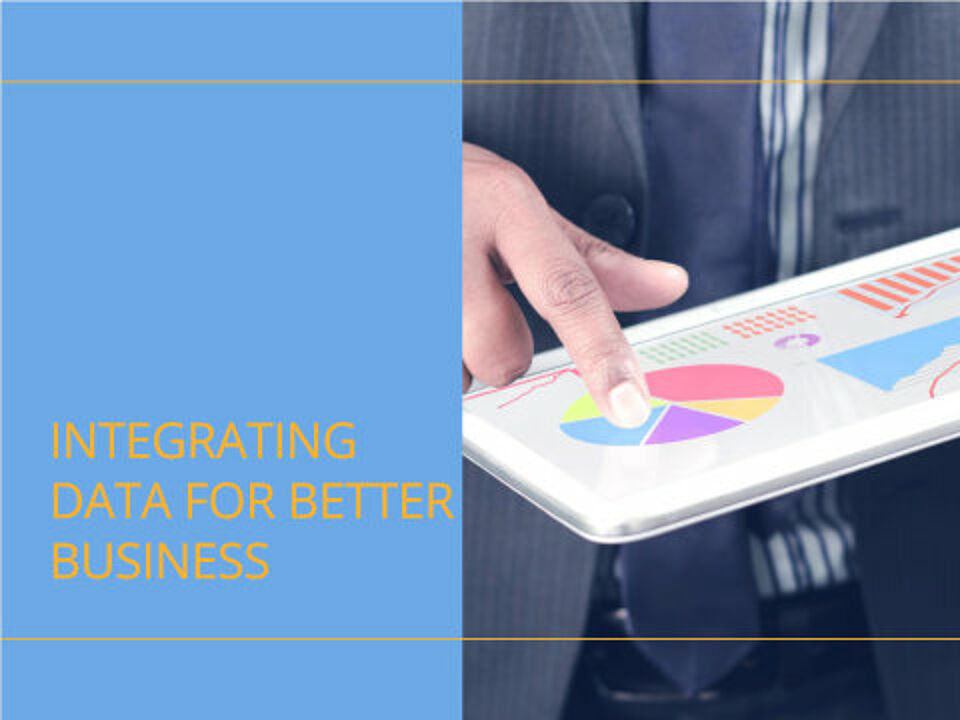
Why is data integration important?
Data integration plays a crucial role in a data-driven world. Here are some reasons why data integration is important:
Use cases for data integration
Data integration has a variety of use cases across different industries. Companies can use data integration to optimise critical business processes, such as managing customer relationships, workforce planning or inventory management. By integrating data from different sources, companies can gain a comprehensive understanding of their business processes and make informed decisions.
Efficient integration of enterprise data
Companies are often confronted with large amounts of data and data from different sources. Efficient data integration enables companies to organise and manage their data effectively. By integrating data from different sources into a central data warehouse, companies can create a unified data model and get a single view of their data. This facilitates analysis and reporting and contributes to the efficiency of business processes.
Continuous data quality assurance
Data quality plays a crucial role in data integration. Monitoring and ensuring data quality is an essential part of the data integration process. By implementing continuous data quality monitoring, organisations can ensure that integrated data is accurate, consistent and up-to-date. This contributes to the trustworthiness of the data and enables users to make informed decisions based on the integrated data.
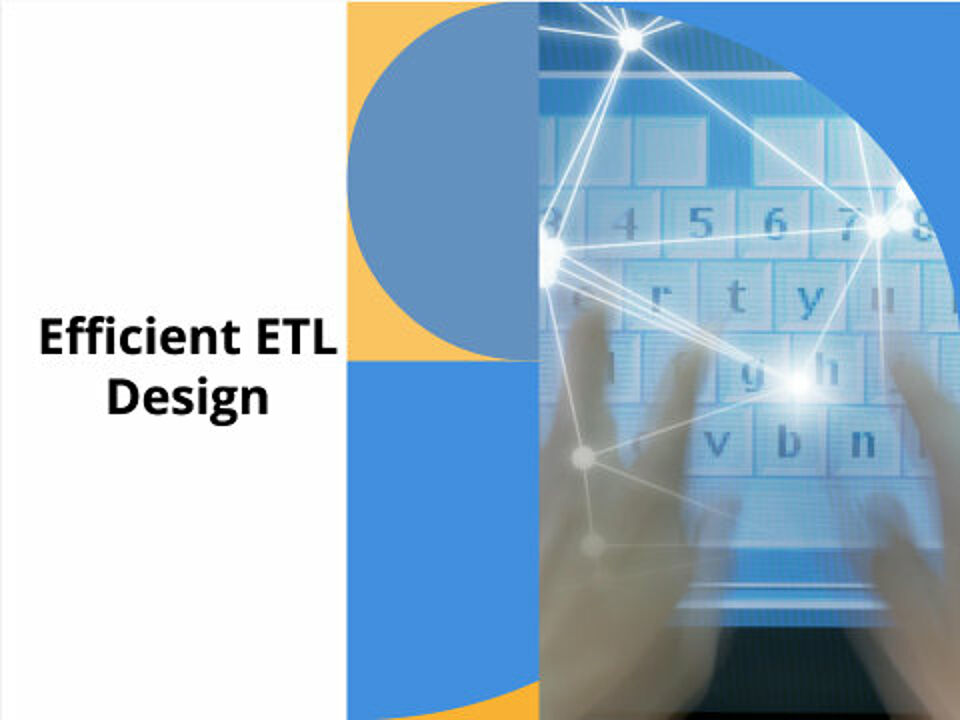
ETL - extraction, transformation and loading
ETL stands for "extraction, transformation and loading" and is an important process in data integration. Here are the individual steps of the ETL process:
Importance and procedure of data extraction
Data extraction is the first step of the ETL process. It involves extracting data from various sources, such as databases, CSV files or APIs. Data extraction can be done in real time or at regular intervals, depending on the needs of the organisation.
Transformation of data for integration
The transformation phase involves cleaning and transforming the extracted data to prepare it for integration. This includes cleaning up erroneous or missing data, transforming data into the desired format and applying business rules or logic to the data. Transformation plays a crucial role in harmonising data from different sources and ensuring a consistent data format.
Loading the data into a data warehouse
The final step of the ETL process is to load the transformed data into a data warehouse. A data warehouse is a special storage location for integrated data that allows companies to use the data for analysis and reporting. Loading the data into a data warehouse enables easy and efficient data availability for users.
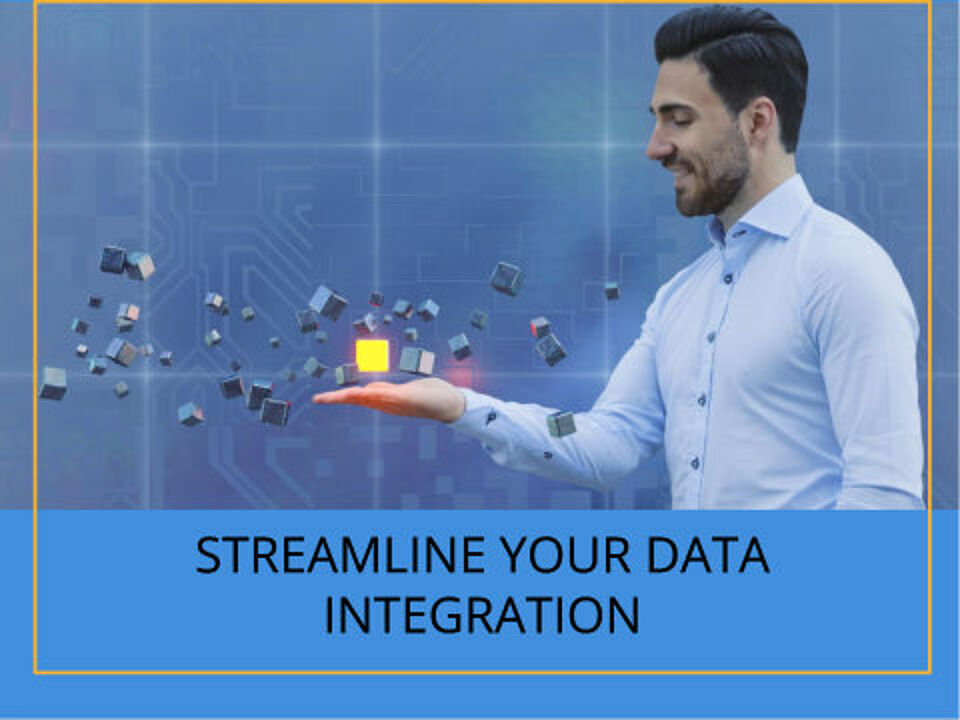
Tools and solutions for data integration
There are a variety of tools and solutions used in data integration. Here are some important tools and their functions:
Cloud-based data integration solutions
Cloud-based data integration solutions enable organisations to integrate data from various sources in the cloud. These solutions provide real-time data extraction, transformation and integration capabilities. They also offer advanced data quality monitoring and data protection compliance features.
Database queries for merging data
Database queries are another important tool for data integration. By running queries, organisations can merge data from different databases or tables and get a unified view of the data. Database queries can support complex operations such as joins, filtering and aggregation to facilitate data integration.
Business Intelligence (BI) for report generation
Business intelligence (BI) tools provide functions for creating reports and visualising data. These tools can integrate data from different sources and create dashboards and reports to provide users with a comprehensive understanding of the data. Business intelligence tools are particularly useful for business users who want to quickly gain insights into data.
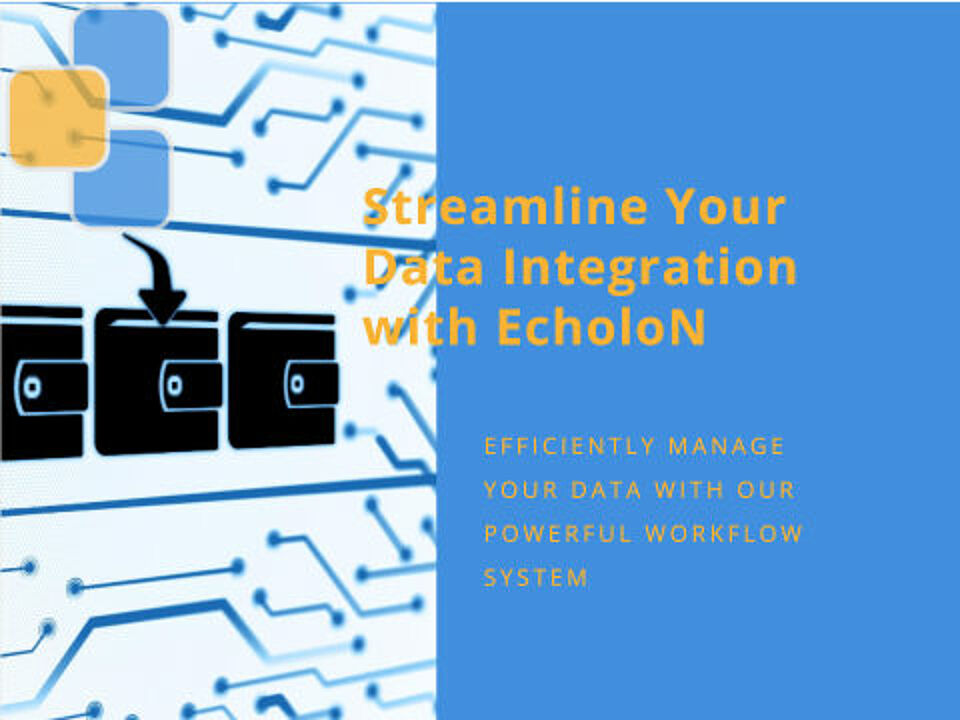
Tool for data integration: EcholoN Data Workflow System
Data integration tool: EcholoNs Data Workflow System
The main difficulty of data integration is that these data have to be filtered, sorted, broken up or put together, regardless of the original system from which they originate. Not every tool can do that. In addition, it should be possible to manually determine the intervals at which information and data are to be imported.
The data workflow system from EcholoN offers exactly that. With the graphical user interface, you can intuitively master data integration. The entire data communication takes place without programming, which makes the exchange extremely convenient. The aim of the software is to avoid duplicate data maintenance and thus to create free resources. All data is always up-to-date and correct - from a single interface.
In addition to the above, the Data Workflow System offers several other advantages over other tools available on the market. Feel free to contact us; together we will find the right solution for you!
Frequently asked questions - FAQs
What is the meaning of data integration?
Data integration refers to the process of combining data from multiple different sources to provide a unified view. This means that companies can access stored data in a variety of ways and use it for analyses. Data integration helps to gain valuable insights and improves data quality.
What type of data integration does a company mainly use?
The type of data integration that is most commonly used is data virtualisation. This is a technology that makes it possible to query and manipulate data in real time without the need for a physical copy of the data.
How can the data integration process be automated?
The process of data integration can be automated through the use of tools and solutions. These technologies help to collect and consolidate data from different source systems and integrate it into the target system.
What are the benefits of data integration?
Data integration offers numerous advantages for companies. It improves data quality, enables a holistic view of data and facilitates access to data. It also helps to optimise business processes and gain valuable insights from the underlying data.
What are some common challenges with data integration?
The challenges of data integration can be complex and often include data security, data quality control, integrating a variety of data sets and managing heterogeneous data sources.
How do tools integrate data from different sources?
Data integration tools combine data from different source systems into a centralised database. This process, often referred to as ETL (extract, transform and load), ensures that the data is consolidated, prepared and made available for further processing.
What are best practices for data integration?
Best practices for data integration include clarifying business objectives, planning the architecture for data integration, using appropriate tools and technologies, and continuously collecting and monitoring data quality.
How does data integration help improve business processes?
By providing a unified view of data across the organisation, data integration helps decision makers make informed decisions and improve business processes. Understanding and utilising integrated data can help increase operational efficiency and improve business outcomes.
What role does technology play in data integration?
Technology plays a critical role in data integration. Modern data integration solutions offer a variety of capabilities, including real-time data processing, data consolidation, and the ability to integrate data from a variety of external sources.
Why is data quality important for data integration?
Data quality is critical to data integration because it affects the accuracy, consistency and reliability of the integrated data. High quality data leads to better business decisions and optimised business processes.
